This was one of my regular walks along the Lane Cove Valley looking for and photographing fungi. On this trip, I started from Thornleigh, and walked down Lorna Pass via the Great North Walk track and continued down the river to the DeBurgh Bridge which I crossed, then a loop along the Riverside Track to Porters Creek and back along the road to Lane Cove Road, and out to Macquarie Park Station.
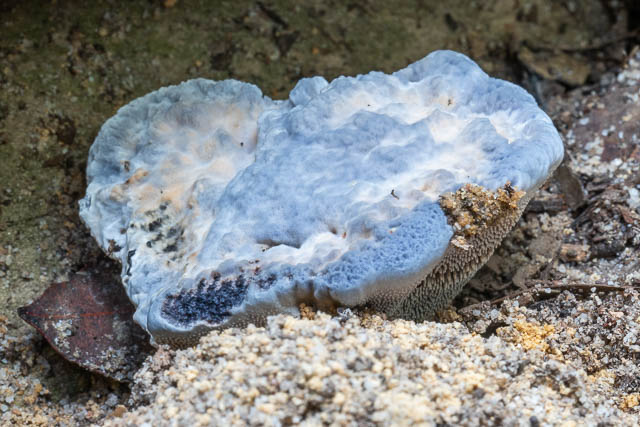
Perhaps Hydnellum fraudulentum
There was not a super abundance of fungi, but what I did find was most interesting. Higher up were quite a few boletes. Here is one –
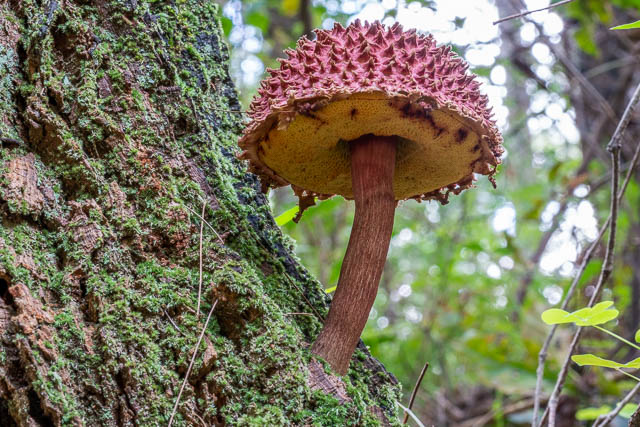
Here is some of the other fungi from higher up –
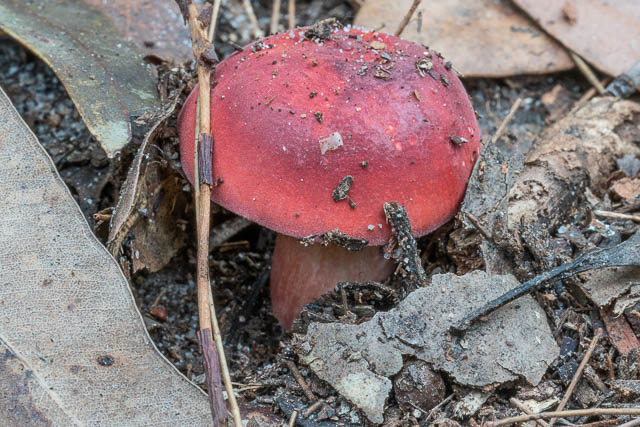
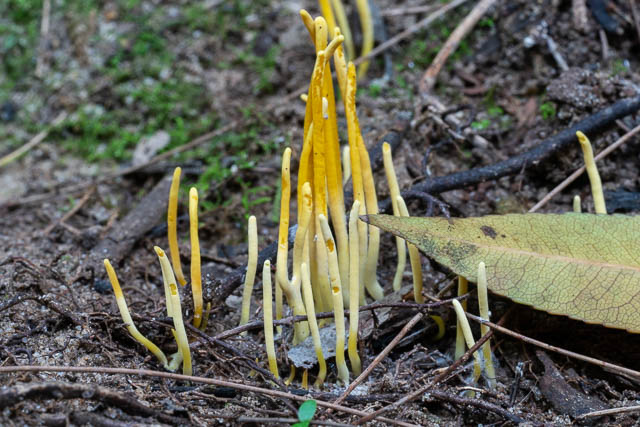
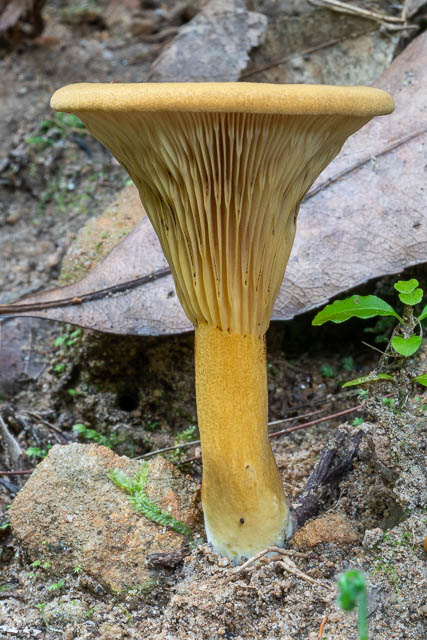
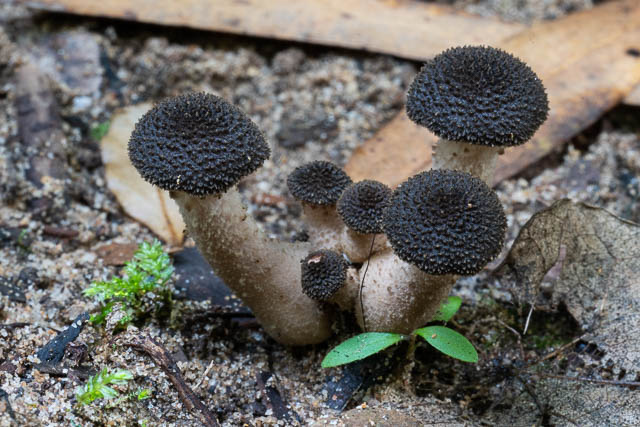
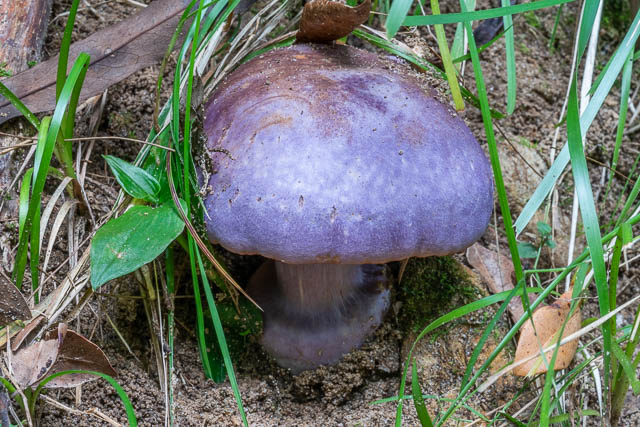
Some of the fungi was a bit dried up, other fungi was quite fresh. Here is a spider that has been infected with a mould –
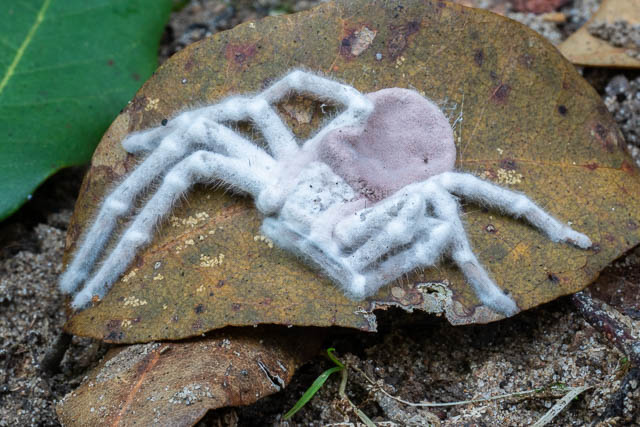
Lower down just before the junction with Devlins Creek, one area was fascinating for fungi. I had stopped to photograph a few clusters of a small white fungus that I have seen a lot of lately. It grows on dirt banks and even on rocks. When first forming it seems to have quite a rough, almost hairy, surface. As it develops it changes shape somewhat. Here are some photos of it –
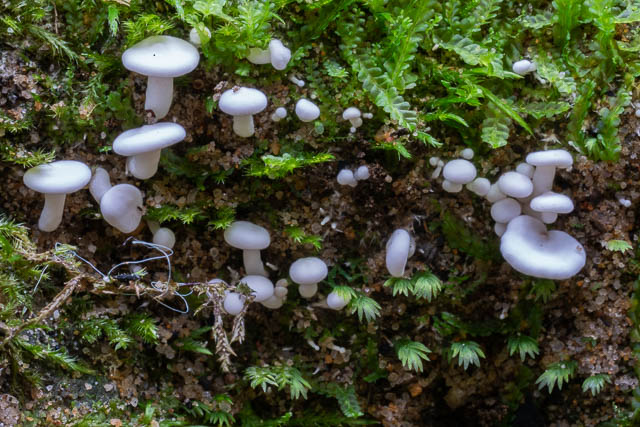
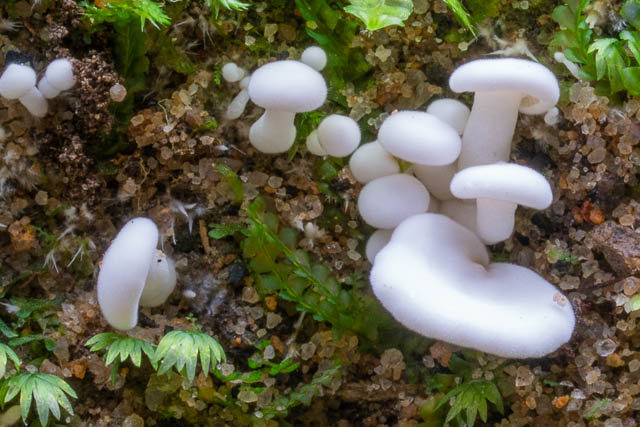
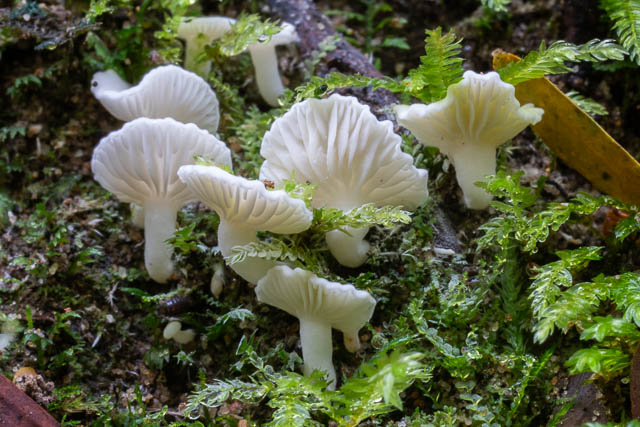
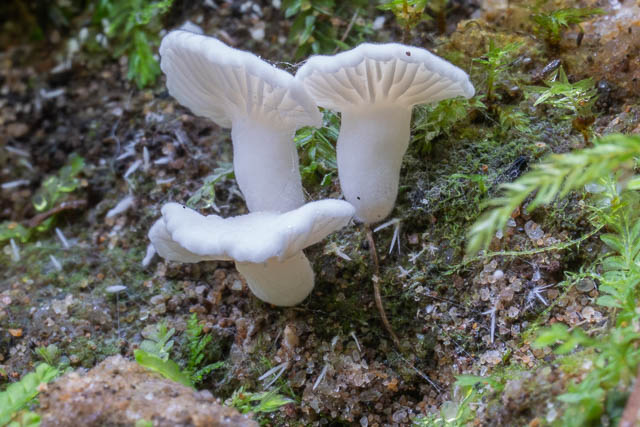
It never seems to get much bigger than about 15 mm across, and is mostly less than 10 mm.
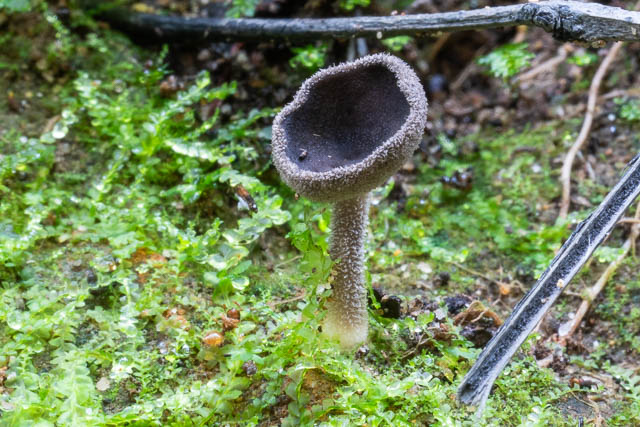
Nearby, I also spotted a very interesting Ascomycete. It was a small, hairy black cup fungus with a hairy stipe. It looked like a Helvella sp.
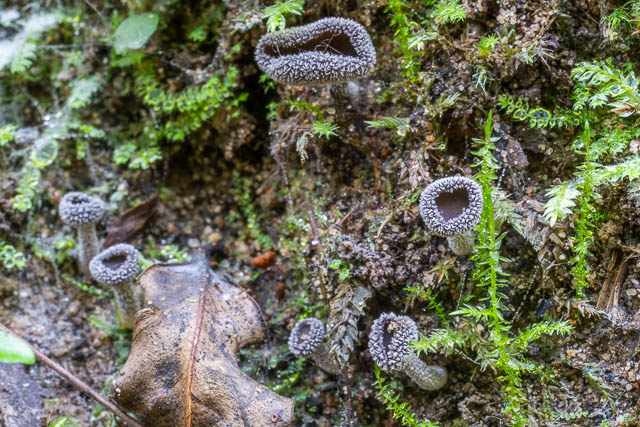
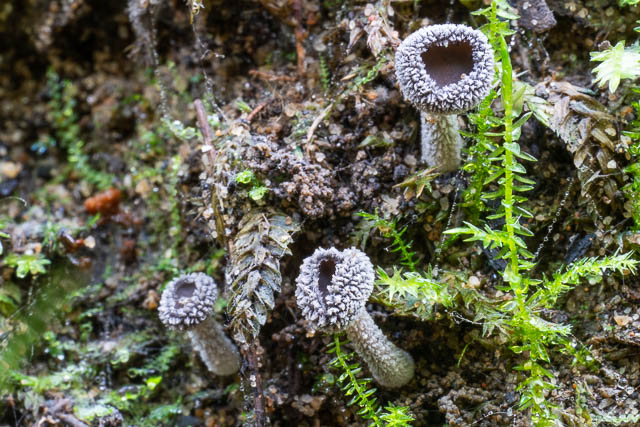
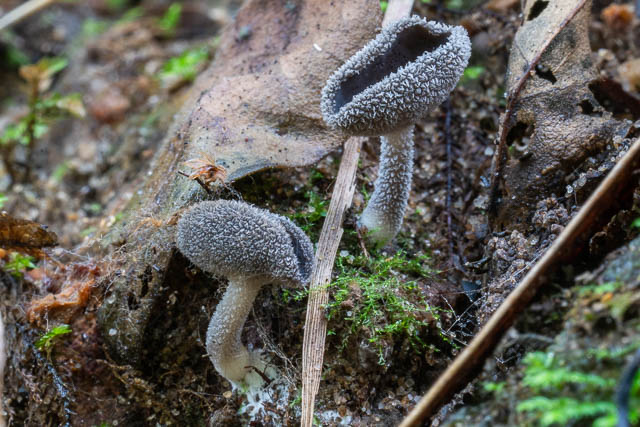
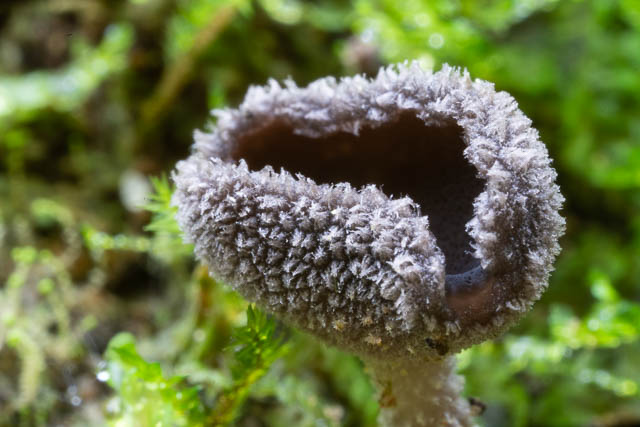
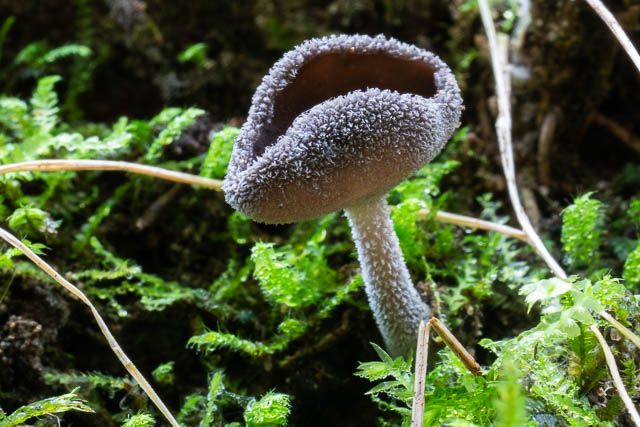
I would not have spotted it except that I was low to the ground photographing the white species. Mycologist Genevieve Gates has suggested it is Helvella aff macropus. I have seen it before and it looks similar. But the ones I have seen are larger and much less hairy. So perhaps these are immature? This turned out to be correct as found on a subsequent visit to this spot.
Nearby were some corals. The yellow one was a bit dried out. One of the others has been infected with a mould.
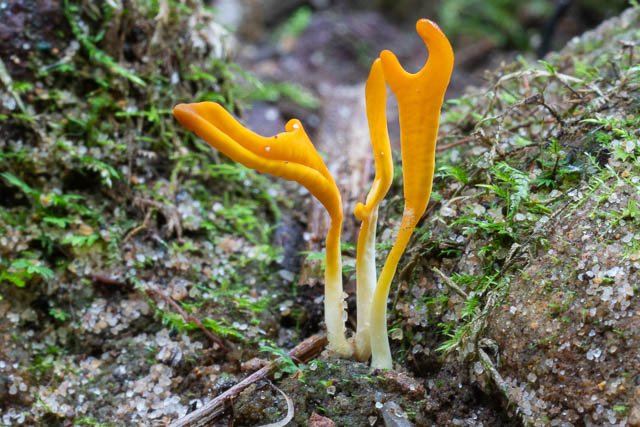
There were some other Ascomycetes around –
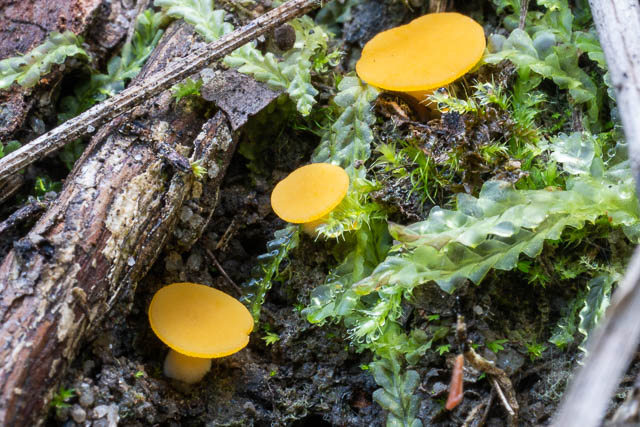
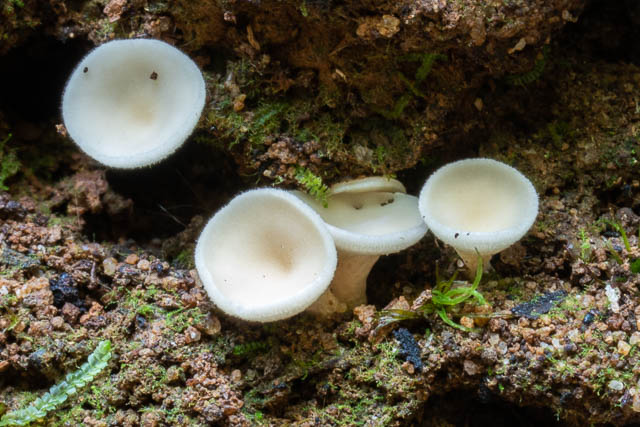
I continued along the track, and for a section my photography was diverted to botany. Photographing some orchids, sundews and bubbles in the moss.
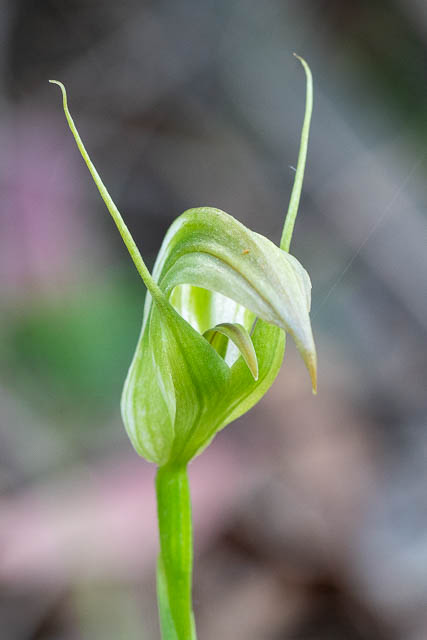
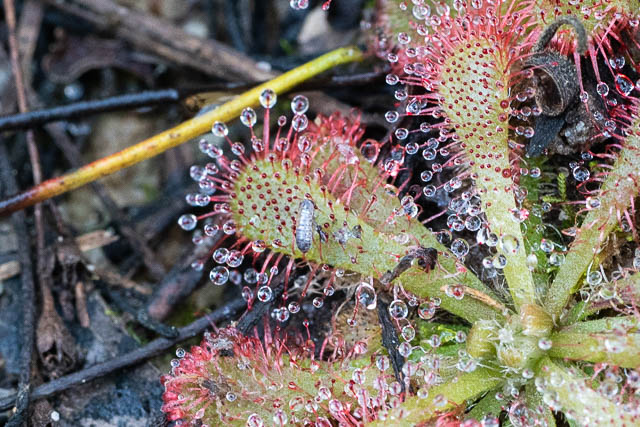
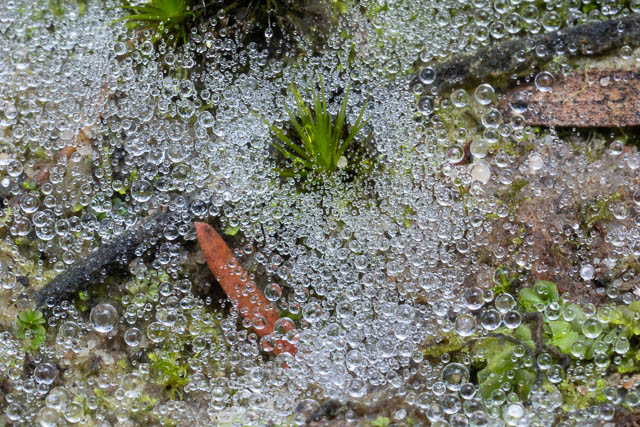
Further along, I was on the lookout for trumpet fungi that I had seen on a previous trip a few years ago. I dint spot it, but did spot some other interesting fungi. The first was a weeping polypore that I have often seen growing at the base of an Angophora costata.
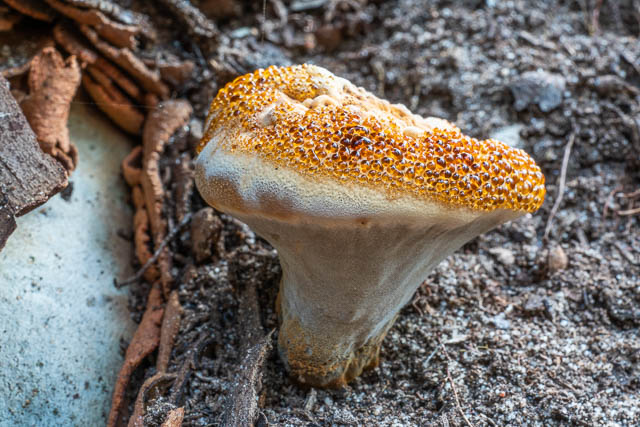
I am not sure what it is, but an online correspondent has suggested it may be Inonotus albertinii.
Not far from this I spotted several other fungi. They were a light blue colour. I though this may be due to a penicillin mould infection. But closer inspection showed the blue colour was intrinsic. They also had spines.
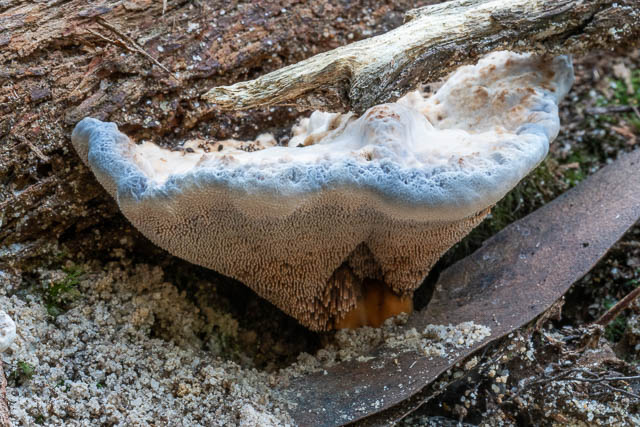
When I arrived home, I did some online searching and the species that seemed to fit was – Hydnellum caeruleum due to the blue colour, spines and an orange stipe. But when I posted photos of it on the Sydney Fungi Facebook page, a correspondent suggested it may be Hydnellum fraudulentum. I now think this may be a more likely identification as the two species are visually very similar. This seems to be a very rare fungus.
Further along the track I found some of the more common species of Spine Fungi –
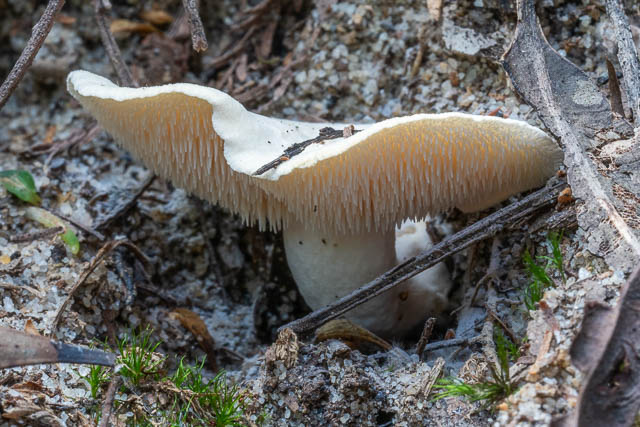
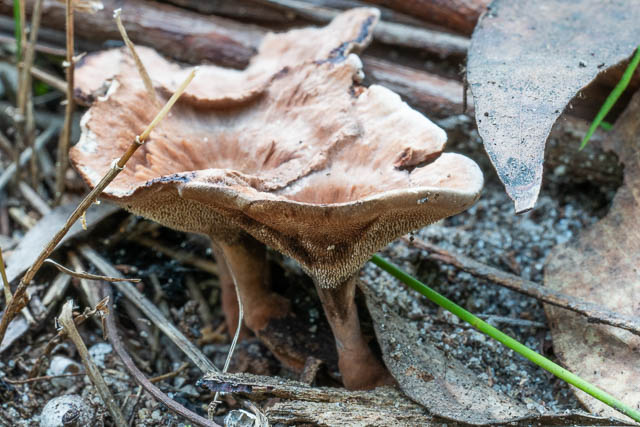
And some more fungi –
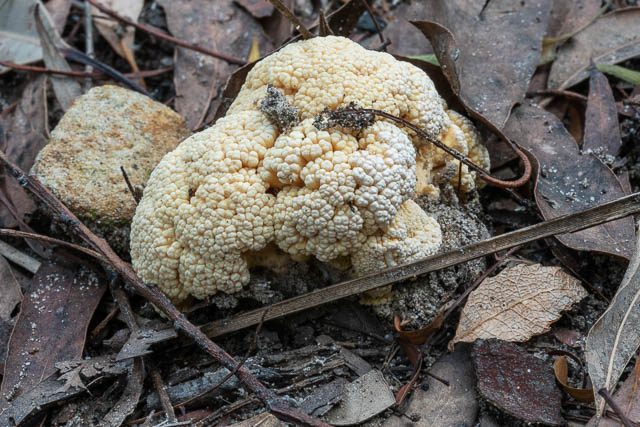
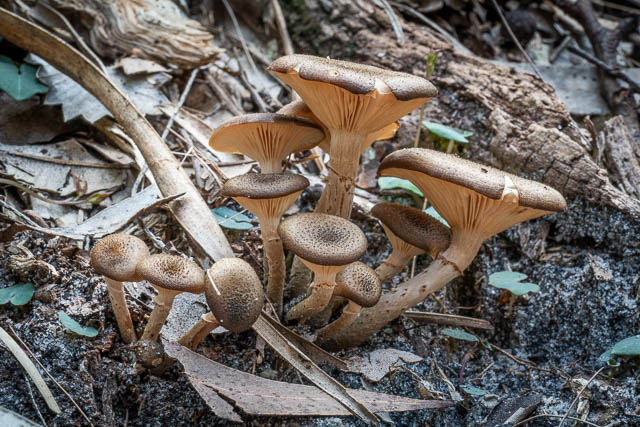
At Porters Creek, I did not find too much out. But I did spot a waxcap – a Hygrocybe austropratensis.
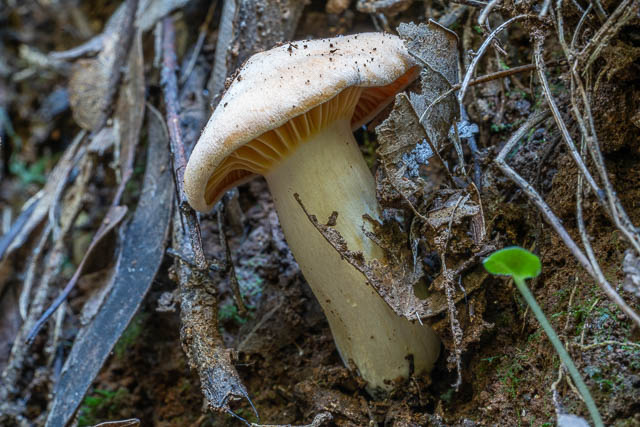
More photos together with identifications are online here on my website.
